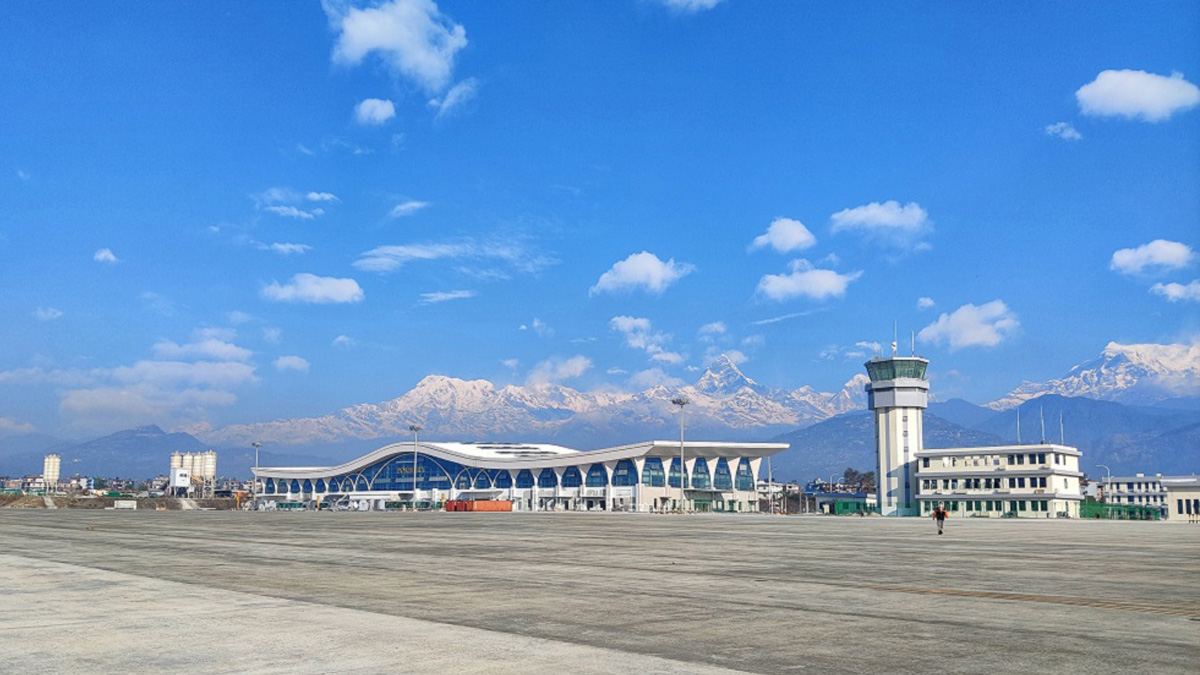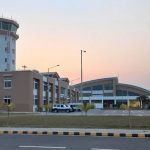
Nepal in China’s Debt Trap: PRIA Records Only 5 International Flights in a Year
In a startling revelation, the newly inaugurated Pokhara Regional International Airport (PRIA), funded through substantial loans from China, has witnessed a meager five international charter flights since its commencement on January 1, 2023. Despite the grand ambitions of serving 10 lakh air passengers annually, the airport’s operations seem to be falling short of expectations, raising concerns among local residents and authorities.
The Civil Aviation Authority Office at Pokhara International Airport has disclosed that only five international flights took place in the entire year, prompting growing concerns about the viability and impact of the ambitious project.
The first international flight landed on June 18, when a Sichuan Airlines aircraft from Chengdu, China, touched down at PRIA. The flight, which carried 84 Chinese guests participating in the Dragon Boat Race Festival at Fewa Lake, marked a historic moment. However, the return journey was an empty flight via Kathmandu, raising questions about the sustainability of international routes from PRIA.
The second international flight, a Druk Air service from Bhutan’s Paro International Airport, landed on September 8. The flight brought only three passengers to Pokhara and departed with 42 foreign passengers, with the Civil Aviation Authority of Nepal (CAAN) noting it as PRIA’s first commercial flight. This development raises doubts about the airport’s ability to attract regular international travelers.
On November 8, two Chinese cargo aircraft arrived in Pokhara, transporting relief materials provided by the Chinese government for earthquake victims in Jajarkot and Rukum. While this humanitarian effort showcased the airport’s potential role in facilitating aid operations, it also underlined the lack of regular commercial flights utilizing PRIA.
Later, on November 23, a Himalayan Airlines plane brought a team of Chinese athletes to Pokhara. The flight included 95 people, comprising players and sports technicians, highlighting the airport’s capability to cater to special events. However, such sporadic events cannot sustain the economic aspirations tied to PRIA.
While the inauguration of PRIA was celebrated with enthusiasm by the local residents of Pokhara on the first day of the English New Year 2023, disappointment has set in over the course of the year. Widespread complaints assert that the tourism sector and the entire Gandaki Province have not reaped the anticipated benefits from the international airport.
Local businesses and authorities had high hopes for increased tourism, economic growth, and job opportunities with the establishment of PRIA. However, the limited number of international flights has raised questions about the airport’s impact on the local economy and its ability to fulfill the promises made during its inception.
The Pokhara International Airport was built with a loan assistance of Rs 22 billion from the Exim Bank of China. The Government of Nepal had signed a loan agreement of 1.37 billion Chinese Yuan with China’s Exim Bank seven years ago. However, the government has been exempted from paying interest on 25 per cent of the loan, meaning it does not have to pay interest on 344.46 million Yuan, while it has to pay 2 per cent interest on the remaining amount. This loan has a grace period of 7 years and is to be repaid in a total of 20 years.
On December 31, just a day before the inauguration of the Pokhara International Airport (PIA), the Chinese Embassy in Nepal claimed the PIA to be a flagship project of China’s Belt and Road Initiative (BRI). This claim adds to the concerns surrounding PRIA, as critics argue that such projects may be contributing to a debt trap scenario for Nepal, with limited benefits and economic returns.
As the spotlight intensifies on PRIA’s underwhelming performance, questions are being raised not only about the economic viability of the airport but also about the broader implications of relying on substantial Chinese loans for infrastructure development in Nepal. The PRIA project is now at the center of a growing debate over the potential pitfalls of participating in China’s Belt and Road Initiative, with concerns of debt dependency and the need for a thorough reassessment of such projects in the future.













Comments